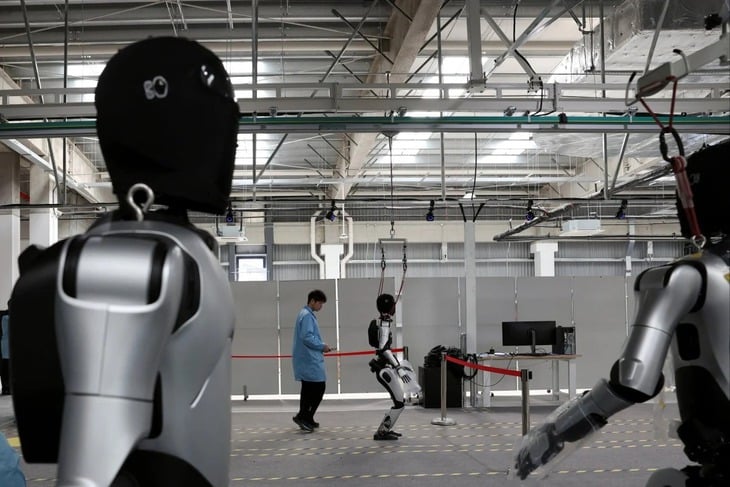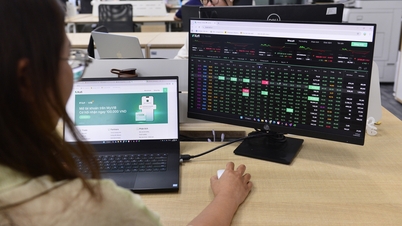
Nearly 300,000 new robots will be installed in Chinese factories by 2024, helping to handle simple and repetitive tasks - Photo: SCMP
According to the South China Morning Post on October 6, the robot boom in the context of an aging population is helping China offset labor shortages and consolidate its manufacturing advantage.
Analysts predict that the manufacturing sector of the country of a billion people will develop even more strongly as humanoid robot technology is increasingly perfected.
Since 2022, China's population has been steadily declining, falling by 1.39 million last year alone. However, the country leads the world with more than 2.027 million industrial robots in operation, according to the World Robot Report 2025 by the International Federation of Robotics (IFR).
A report released in September said more than half of the world's 542,000 new robots were installed in Chinese factories by 2024.
These machines perform many manufacturing steps such as welding car frames, assembling electronics and moving heavy goods with high precision, helping to fill labor gaps caused by demographic shifts.
Professor Cao Xudong of the Faculty of Economics and Management, Tsinghua University (China), commented: "This is an inevitable trend when simple, repetitive jobs will be performed by robots in the future, although there are still many tasks that require human creativity and flexibility."
"Despite the population decline, thanks to improving labor skills and widespread application of robots, China's manufacturing industry can completely maintain and enhance its competitive advantage," he added.
China's population shrank by about 0.1% last year, but the number of industrial robots installed rose by 5% to 295,000, accounting for 54% of the global total, according to government data.
Japan ranked second after China, with 44,500 new robots, and the US ranked third with 34,200 robots. The total number of industrial robots globally in 2024 increased by 9% to 4.664 million.
Humanoid robots are seen as the next stage in the industrial upgrade. Although there are no exact figures on orders, Chinese companies are quickly moving from research and development to large-scale commercialization.
Last August, Tiantai Robot Company (Guangdong) received an order for 10,000 humanoid robots - the largest ever in the industry, to serve the elderly care market.
However, according to Professor Cao, China still needs a highly skilled workforce to operate smart industries such as robot system maintenance.
By 2030, the country is expected to have a shortage of about 50 million skilled workers, according to a report released by the China Human Resources and Social Security Information Center in April.
Source: https://tuoitre.vn/trung-quoc-dua-doi-quan-gan-300-000-robot-vao-nha-may-lap-cho-trong-dan-so-20251006150224077.htm







































































































Comment (0)